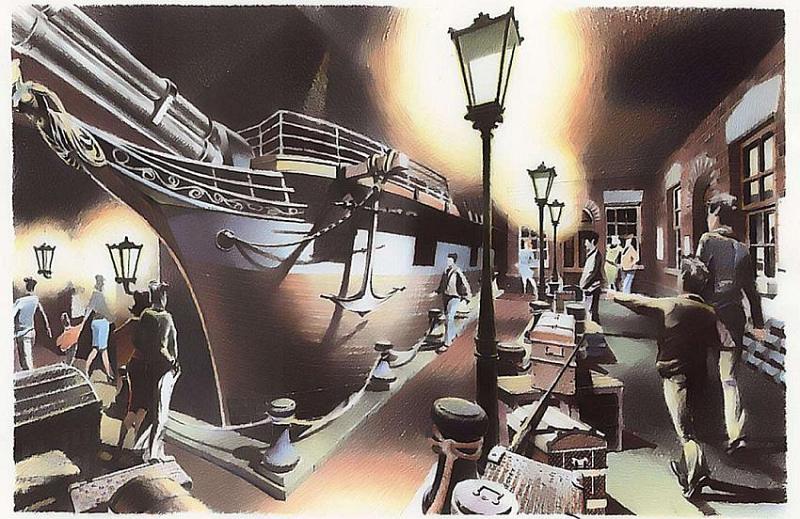Prices
-
Hi anglaret. Ok, so it would cost 150€ per view but i would have to add more environment and entourage. Many thanks!

And do you know how much images do clients usually buy?
-
Ibon,
You are getting great advice here and I would really listen to it as these are mostly people doing this type of work for a living (as am I). this is the advice I would give although it is much the same as others:
Do not look too hard at what the industry is paying, look more to what you think your time is really worth and what you need to not only survive but also profit a bit. Not everyone wants to only survive but also move ahead.
Trust in yourself and your work (your renders are quite nice). If you believe in your work and what you are doing it shows and people looking to employ you will not feel as though they have the upper hand and feel they can give you very little for a lot of work.
People you know from school, whether a teacher or professor know you are new and feel you do not deserve too much money so they will not pay it. Go to where people to not automatically know you are either in school or just out and let your work speak for itself. Then you will see what you are worth.
Never tell anyone you are new or just out of school. They do not need to know this and the minute they do they feel as though they have the upper hand.
Even if a computer is tied up rendering there are still costs involved to you and you need to charge for that time as well. I have explained it as "I can not work on that computer if it is rendering so that ties up some of my gear, in turn I have to charge for it".
BUT in the end what companies will pay for rendering/modeling work will depend on where you are located. Larger cities usually will pay more than a small own but this is not a rule just something that I have found to be true.Good luck,
Scott
-
Modelhead is spot-on.
The past couple of years have seen an explosion in the number of people offering visualisation services - and the majority are crap.
Those who can actually deliver quality work shouldn't be afraid to charge a top rate for doing so.
And also, tailor your rate to the industry you are working for. For example, I charge a lot more to an aerospace company than to a small interior designer - because I know the market can stand it.
HTH
Andy
-
Thanks Scott for so good advices. I see that you have a lot of experience in the world of visualizations, and it encourages me to do this question to you. It may seem a silly question, but how did you started?
I mean, how did you made your first clients? you made your 4dvisual web (in which its an outstanding work certainly) and you announced it somewhere somehow?Many thanks
-
ibon,
After graduating with a BArch degree from uni I chose to work as an architectural illustrator / visual artist / perspectivist or what you may call it, and did it for 7 years. I did my illustrations by hand. I don't do it anymore, I work as an architect now which I find more gratifying and rewarding.
Visualisation is an extremely competitive field and a tough business to run. There are two ways you can approach working in the field. You can either treat it as means to make extra money on top of your regular income or you can do it full-time. Better start part-time.
-
Build an outstanding portfolio. At the moment your work is perhaps adequate, but hardly mind boggling. As most potential clients will grant you no more than a minute to convince them you are good enough, your work has to be of 'you blew me away!' standard. Make an easy to navigate website of your folio.
-
You have to let the industry know of your existence. A huge job! Hard sell is the most effective, but can be emotionally painful. Be prepared to hear 'not interested' A LOT! If you want to do architectural visualisation, find the names of the arch. firms in your area. Phone the firms, introduce yourself to the receptionist and find out who you can speak to / email to in the firm regarding the services you are offering. Obviously a lot depends on your communication skills. Aim to send emails with a link to your folio to 50 to 100 firms (or more!). One or two may reply if you are lucky
 .
. -
Word of mouth is the best way of getting new clients. People will only recommend you to others if you a) are a great visualiser, b) charge reasonable rates, c) are professional when it comes to the business side of things (i.e. not meeting deadlines is an easy way to get a terrible reputation). After initially introducing yourself to different architectural firms in your area, you must keep on 're-introducing' yourself regularly with little updates to your website.
-
If you choose to do this full-time, and you are planning to work on average, say, 40 hours a week, allow for only 20 of those to be billable. The other 20 will be spent on things you won't be able to charge any money for: self-promotion, 'research', self-education, changing your office layout etc etc. If from the outset you are planning to work 60-80 hours week in week out, you will burn yourself out in the first year.
-
After you've set yourself up, be prepared for the dreadful 'no work' periods and the no less dreadful 'too much work, stop the world I want to get off!!' periods. Letting work go because you have too much on might give you insomnia and indigestion
 . Try to team up with like-minded and talented people who you could pass surplus work onto, and who would do the same for you. Consistent flow of commissions is a key to making a living in this business.
. Try to team up with like-minded and talented people who you could pass surplus work onto, and who would do the same for you. Consistent flow of commissions is a key to making a living in this business. -
Money - aim high. If you run a full-time visualisation business plan to be making within 5 to 7 years from starting as much as an architect with 5 to 7 years of experience makes in an architectural firm in your country. In Australia you are looking at 70 to 100 thousand AUS$ a year salary for a Senior Architect (or more). If you don't think you can make it to the Spain's equivalent of this level of income in 5 years, my suggestion would be don't do it. Again here in Australia you'd have to be making consistently $1500 to $2000 a week to be at that level assuming you work 48 weeks a year. And don't forget the superannuation (or whatever you have in Spain in the way of pension contributions) that you have to pay yourself. 1500 a week, means $75/hour rate (based on the 20 billable hours a week supposition). If you are professional at all the aspects of running your own business, and not just the rendering side of things, you should be paid good money on par with other professionals in the construction industry. Obviously when you start out you should aim at the salary level of a Graduate Architect rather than that of a Senior professional. Commercial artists who see themselves as somehow inferior to the architects and as a result charge less 'cuz they don't think themselves worthy, don't survive in the illustration game.
10 euros/hr seems rather little to me to do anything, a dishwasher in Australia gets $10/hr, but then again I don't live in Europe, and don't really know what the rates are.
The visualisation market has changed dramatically in the last 5 years. SU and other programs are now making it easier than ever to do architectural illustration. As a result a lot more people are doing it. Some of the above probably doesn't apply to the current congested environment. Still I thought I'd share.
My looong 2 cents
 , sorry for the length. Good luck!
, sorry for the length. Good luck!


-
-
What can I say putnik... Many many thanks for such a detailed response. Now thanks to you and everyone that has written in this topic i'm closer to real world
 .
.I know that the world of archviz is very hard and i don't want to do that work full time. In the future i want to be an architect, but for now, as i've been offered an small work as illustrator i look for advice in you, and you have been really helpfull. So, thanks again!
Advertisement







